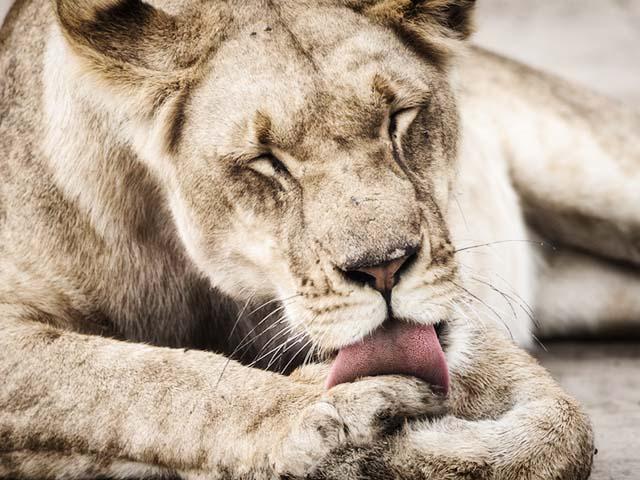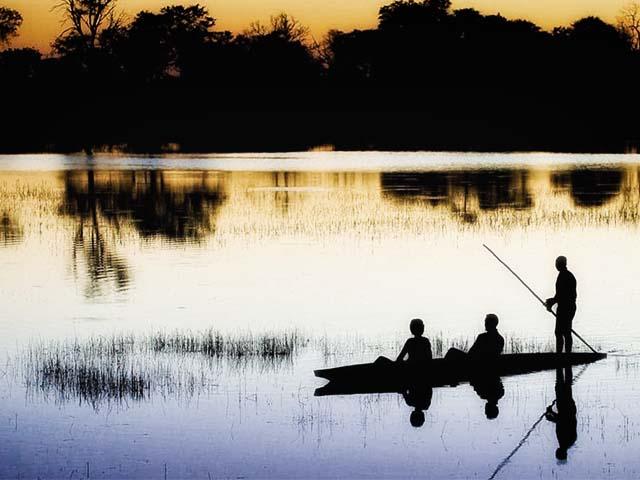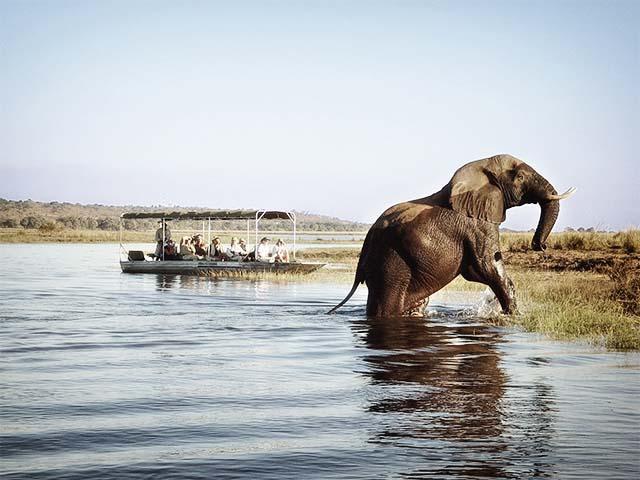CHOBE NATIONAL PARK
Chobe National Park—A Haven of Elephants and Riverfront Wildlife
Introduction
Chobe National Park, established in 1968, is one of Botswana’s most iconic wildlife destinations and the country’s first national park. Located in the far northeastern corner of Botswana, it covers approximately 11,700 square kilometers and is bordered by the Chobe River to the north. The park offers some of the highest concentrations of wildlife in Africa, particularly elephants, and features an exceptional diversity of habitats and ecosystems—from dense woodland to floodplains and dry savanna.
Ecological Zones of Chobe
Chobe is divided into four distinct ecological regions, each with its own wildlife dynamics and landscape:
1. Chobe Riverfront (Serondella Area)
- Located near the town of Kasane, this is the park’s most visited section
- The Chobe River is a permanent water source, attracting huge herds of elephants, buffalo, and a wide variety of plains game during the dry season (May to October).
- Game-viewing by boat is a unique feature here, offering sightings of hippos, crocodiles, and riverine birds from close quarters.
- The Riverfront also supports predators like lions, leopards, and wild dogs, especially when herbivores concentrate along the banks.
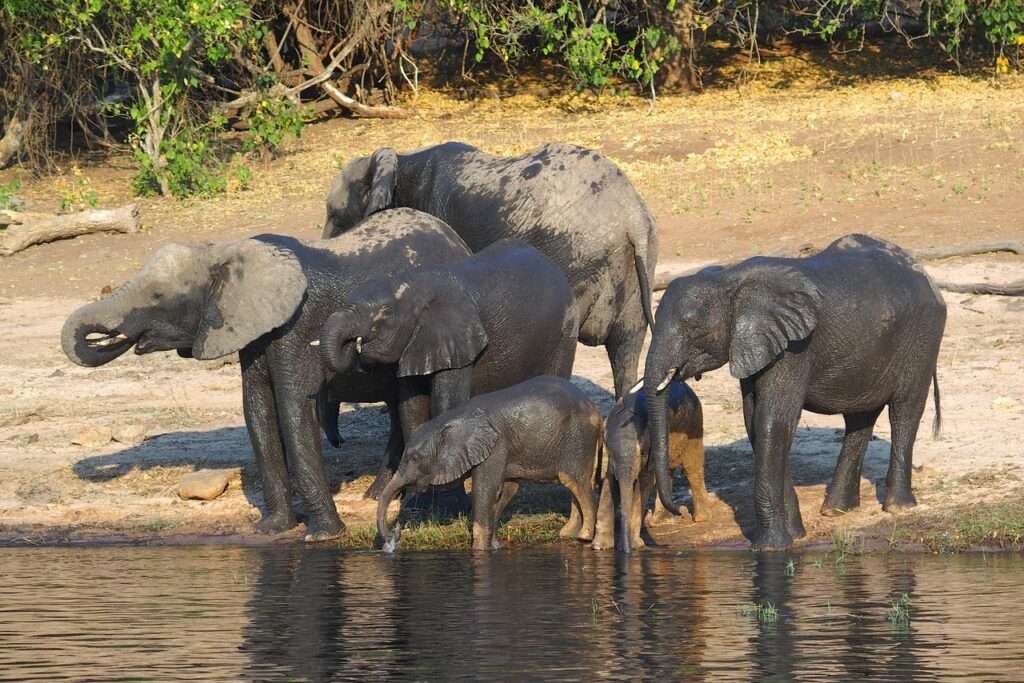
2. Savuti Marsh
- Situated in the southwestern section of the park, this area is defined by the Savuti Channel, which flows intermittently due to tectonic activity.
- Known for its large prides of lions and dramatic predator-prey interactions, Savuti supports seasonal migrations of zebra, wildebeest, and buffalo.
- The Savuti Marsh becomes a key grazing area during the green season (December to March) and remains a top location for wildlife photography and predator viewing year-round.

3. Linyanti Region
- Found in the northwestern corner of Chobe, this area includes permanent waterways, floodplains, and riverine forests.
- The Linyanti River attracts large herds of elephants, hippos, red lechwe, and crocodiles, as well as rare species like sitatunga.
- Linyanti is known for low visitor numbers, making it ideal for a more exclusive safari experience.
- Birdlife is rich, with species such as African skimmers, kingfishers, and fish eagles commonly seen.
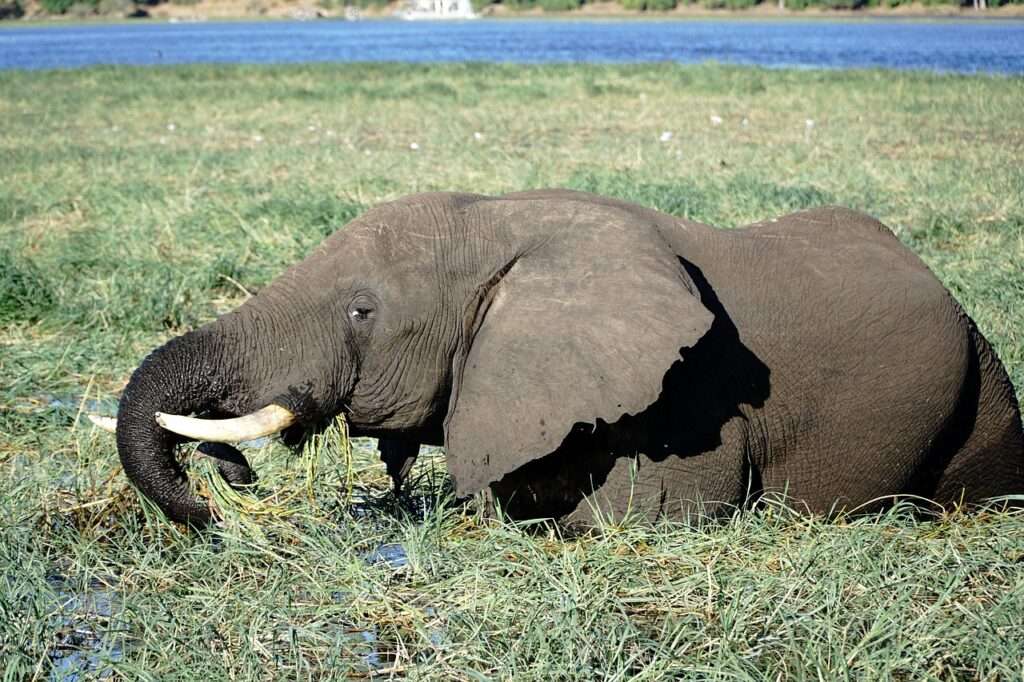
4. Nogatsaa and Tchinga
- These are remote, lesser-known areas in the central and northeastern interior of the park.
- Characterized by seasonal pans, mopane woodland, and acacia trees, these regions are excellent for spotting elephants, kudu, roan, sable antelope, and Chobe bushbuck.
- Due to limited water availability, the dry season concentrates wildlife around natural pans and artificial waterholes.

Wildlife in Chobe National Park
Chobe is especially renowned for its elephant population, with an estimated 50,000 to 70,000 elephants, the largest single concentration of African elephants in the world. During the dry season, they gather along the Chobe Riverfront in dramatic numbers, offering unmatched viewing opportunities.
Other commonly seen species include:
- Cape buffalo
- Giraffe
- Zebra
- Impala
- Impala
- Sable and roan antelope
- Warthog
- Lion, leopard, cheetah, and spotted hyena
The park also hosts rarer species such as the puku antelope, typically found along the riverine areas.
Birdlife
With over 460 recorded bird species, Chobe National Park is a prime destination for birders. The wet season (November to March) is particularly rewarding for birdwatching due to the arrival of migratory birds in breeding plumage.
Notable species include:
- African fish eagle
- Carmine bee-eater
- Southern ground hornbill
- Various storks, herons, and egrets
- Raptors and vultures, including bateleurs, martial eagles, and white-backed vultures
Large flocks of red-billed queleas and numerous waders are also a common sight during the wetter months
Climate and Best Time to Visit
Chobe National Park offers excellent game viewing year-round, but different seasons offer distinct experiences.
Dry Season (May to October)
- Best time for game viewing.
- Elephants and buffalo gather in large numbers at the Chobe River.
- Mild temperatures and less vegetation for better visibility.
Wet Season (November to April)
- Ideal for birding, with vibrant migratory species in full plumage.
- The birthing season for many antelope species attracts predators.
- Lush landscapes and fewer tourists.
Climate and Best Time to Visit
Chobe National Park offers excellent game viewing year-round, but different seasons offer distinct experiences.
Dry Season (May to October)
- Best time for game viewing.
- Elephants and buffalo gather in large numbers at the Chobe River.
- Mild temperatures and less vegetation for better visibility.
Wet Season (November to April)
- Ideal for birding, with vibrant migratory species in full plumage.
- The birthing season for many antelope species attracts predators.
- Lush landscapes and fewer tourists.
Activities
Visitors to Chobe can enjoy a variety of safari experiences:
- Game drives in open 4×4 vehicles, especially rewarding along the Riverfront and Savuti
- Boat safaris on the Chobe River for close encounters with hippos, crocs, elephants, and aquatic birds
- Photography and birdwatching tours
- Self-drive safaris (with suitable 4×4 vehicles)
- Guided mobile camping safaris connecting Chobe with Moremi, Savuti, and the Okavango Delta

